Search
Search Results
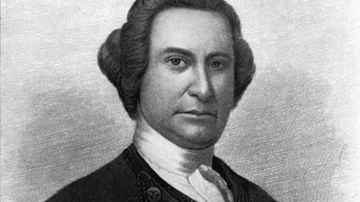
Definition
Sir William Johnson
Sir William Johnson, 1st Baronet (l. c.1715-1774) was a British military officer, diplomat, and Superintendent of Indian Affairs. He was instrumental in aligning the Native Americans of New York with the British during the French and Indian...
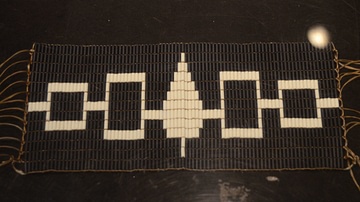
Article
Origins of the Haudenosaunee (Iroquois) Confederacy
The Haudenosaunee, also known as the Iroquois Confederacy, Iroquois Five Nations, or the Iroquois League, was one of the most powerful Native American polities north of the Rio Grande. They arrived in the historical record in the 16th-century...
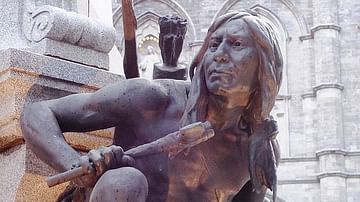
Image
Iroquois Monument Maisonneuve
The Maisonneuve Monument is a monument of an Iroquois by sculptor Louis-Philippe Hébert built in 1895 in Place d'Armes in Montreal.
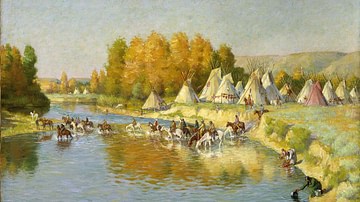
Article
Ten North American Native Facts You Need To Know
The history and culture of the Native Peoples of North America are often overlooked as they have been largely eclipsed by the history of the European settlers who colonized the region beginning in the 17th century. The original inhabitants...
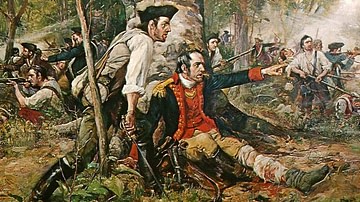
Article
Saratoga Campaign
The Saratoga Campaign (20 June to 17 October 1777) was one of the most important military campaigns of the American Revolutionary War (1775-1783), in which a British army under General John Burgoyne invaded the Hudson River Valley but was...
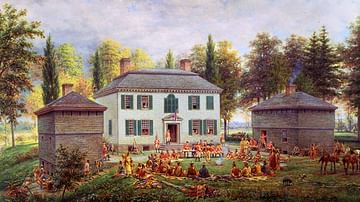
Image
Sir William Johnson Presenting Medals to Chiefs of the Six Nations at Johnstown, N.Y., 1772
A depiction of Sir William Johnson holding a conference with the Iroquois at his home of Johnson Hall in 1772, painting by Edward Lawson Henry, 1903.
Canadian Museum of History, Gatineau.
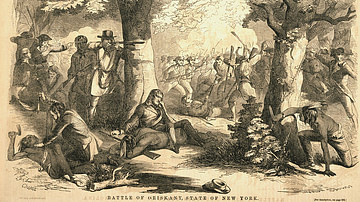
Image
Battle of Oriskany
The Battle of Oriskany (6 August 1777) between a Patriot militia force and a party of Iroquois and Loyalists. Artwork by John R. Chapin, illustration from Ballou's pictorial, v. 12, no. 18 p. 280, May 1857.
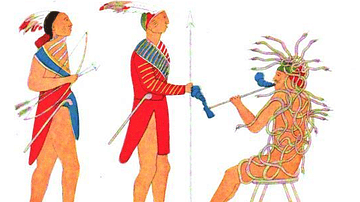
Image
Tadodaho Receiving Two Mohawk Chieftains
Illustration from page 52 of 'The Mythology of All Races, Vol. Ten: North American' by Hartley Burr Alexander. Boston: Marshall Jones, 1916 CE.
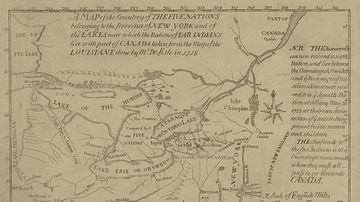
Image
Map of the Five Nations, 1730 CE
Map of the Five Nations, 1730 CE.
Darlington map collection, Archives Service Center, University Library System, University of Pittsburgh, Pittsburgh Pittsburgh, PA US

Image
Hiawatha Belt
Hiawatha belt, symbol of the unity of the original five Haudenosaunee nation (Seneca, Cayugas, Onondagas, Oneida, Mohawk).
National Museum of the American Indian, New York City